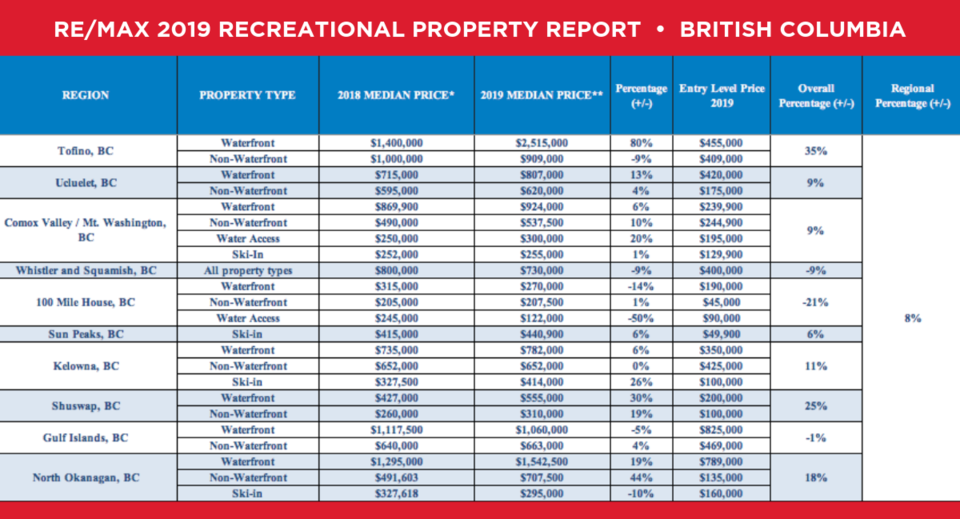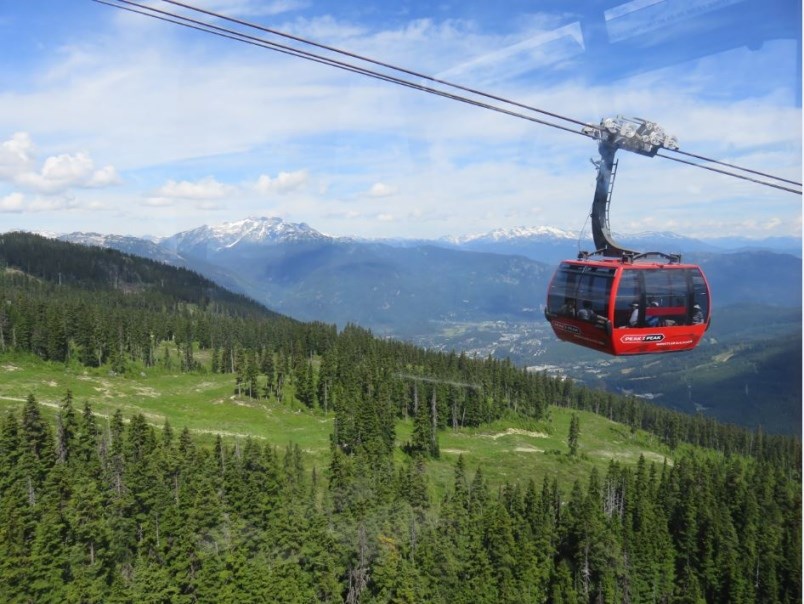Despite of B.C. recreational property sales slowing down, a new Re/Max study released July 23 has found prices of the province’s vacation homes are still rising.
The median sale price of property across B.C.’s key recreational regions is up eight per cent compared with this time last year, found the study. However, the annual percentage change varies wildly, depending on the location.
In Tofino, for example, the median price of a home is up 35 per cent year over year, and that rises to a staggering 80 per cent increase for waterfront properties. On the flip side, homes in Whistler and Squamish have declined in value by nine per cent on an annual basis.
The areas included in the study were Tofino, Uclulet, Comox Valley and Mount Washington (combined), Whistler and Squamish (combined), 100 Mile House, North Okanagan, Sun Peaks, Kelowna, Shuswap and the Gulf Islands.

Elton Ash, regional executive vice-president, Re/Max of Western Canada, told Glacier Media that areas seeing big increases in prices, such as Tofino, were outliers because of their market size. “When you look at Tofino, there’s been specific demand for homes on the waterfront, so it’s hypersensitive to what people are looking for, but also the market size.” Ash said that with only a handful of waterfront homes on Tofino’s MLS in any given year, seeing huge fluctuations in the median sale price is not surprising and doesn’t necessarily indicate a trend.
However, Ash admitted to being surprised by the results of the survey showing that recreational prices across the province had increased overall, considering that actual sales of vacation homes had been “approximately flat” compared with last year.
He pointed to the median price declines seen in the larger combined market of Whistler and Squamish, and said, “This is probably more representative of an overall market, simply because of the size of the market, and truly being a recreational market. So we’re looking at contradictions between markets such as Tofino and Whistler.”
Ash added that the relatively modest six per cent increase in Kelowna waterfront property prices was also “more representative of what’s going on across the entire market.” He pointed out that the Kelowna figures included waterfront condos, which are more plentiful and priced lower, as well as detached waterfront homes. “There’s been fairly significant volume of waterfront property sales in the Okanagan this year, so it gives a little bit of a broader example. And the Okanagan is a true destination for Canada, and waterfront is a finite product.”
Ash recalled the recent Re/Max study that found , now that the oldest of the cohort are reaching their higher earning power and often have young families. He added that they have taken over from their parents’ generation – the baby boomers – in being the biggest driver of the vacation home market, “but they are still turning to the Bank of Mom and Dad, the baby boomer bank, for help with these purchases.”
Ash said that another trend is for millennials to eschew buying a home in too-expensive urban areas, instead buying their primary residence in a recreational area for better value and lifestyle, often while maintaining a rented home in the city of their employment. “These millennials can often work remotely and spend five-day weekends at the recreational home. So they want properties within a two-hour drive and with wifi connectivity. And with Airbnb and VRBO, when these millennials are not using the property, they can get some cash to cover some of their expenses.”



